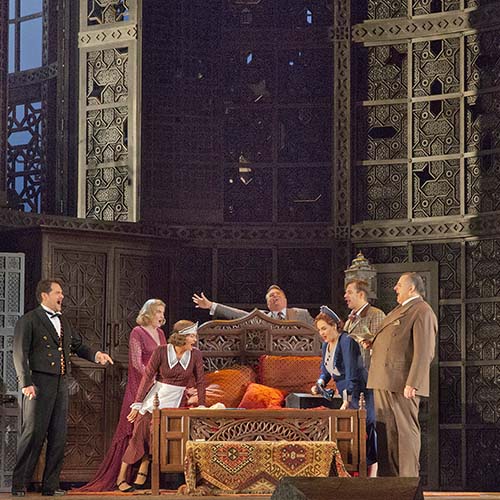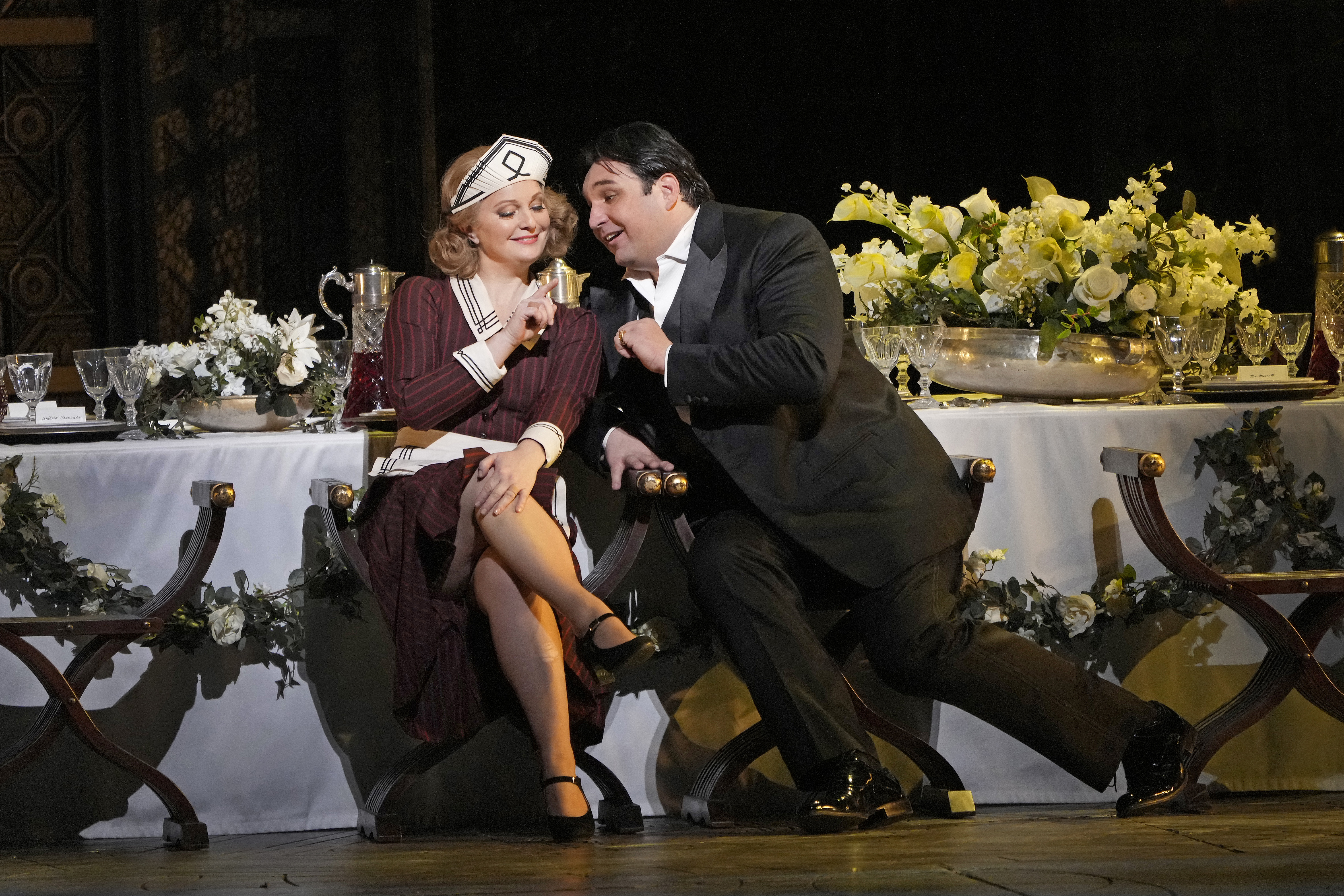
Le Nozze di Figaro
Hiding in closets, jumping out windows, mistaken identities, long-lost children—Mozart’s profound comedy Le Nozze di Figaro has it all and more. Focusing on a single chaotic day in Count Almaviva’s Sevillian manor, the work is widely regarded as the pinnacle of the opera buffa genre and an audience favorite for its instantly recognizable melodies, virtuosic ensemble writing, motley cast of characters, and biting social critique. Indeed, whereas the play upon which Lorenzo Da Ponte based his libretto, Pierre-Augustin Caron de Beaumarchais’s La Folle Journée, ou Le Mariage de Figaro (The Mad Day, or the Marriage of Figaro), caused a scandal upon its premiere, Mozart’s opera continues to entertain audiences nearly 250 years after its premiere, thanks to its timelessly thorough exploration of pure human emotion—pain, deception, love and infatuation, vengeance, forgiveness, and remorse.
The Met’s production by Richard Eyre, which opened the company’s 2014–15 season, updates the 18th-century setting to a manor house in 1930s Seville. With sets evoking the Moorish design influence glimpsed throughout southern Spain—for example, through carved wood paneling and lantern lights that illuminate the stage just enough to hide and to spy—and rotating on the stage’s turntable, the audience can follow the farcical action from room to room without missing a beat.
This guide approaches Le Nozze di Figaro as a classic, lighthearted situational comedy that explores fundamental human drives and desires—for love, revenge, dignity, and connection. The following pages provide musical analyses of some of the opera’s most exciting moments as well as crucial contextual information about the work’s creation and reception. Along the way, students will gain insights enabling them to confront the chaos and complexity of the opera’s plot by relishing the elegance, wit, and pure joy of Mozart’s musical genius.
Included in the 2024-25 season of HD Live in Schools.

